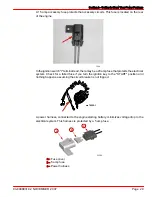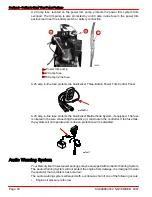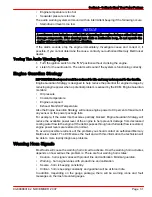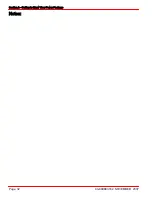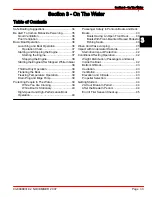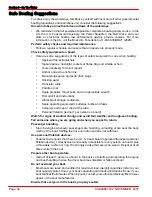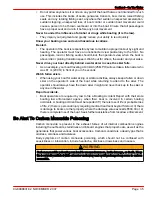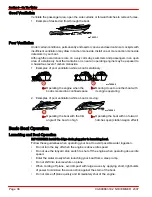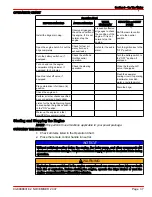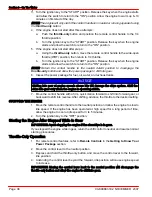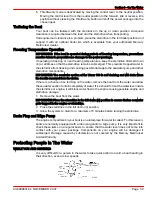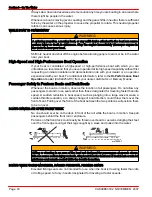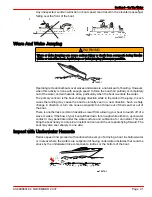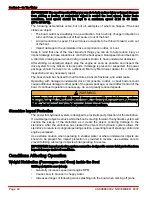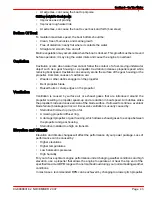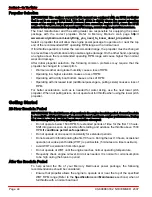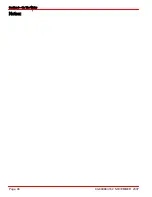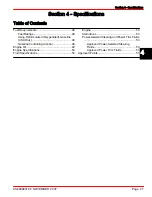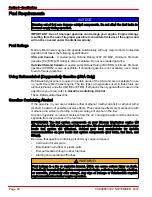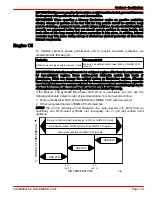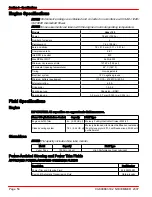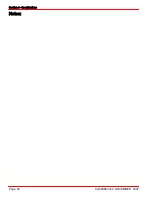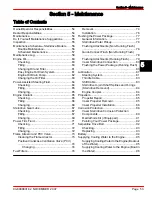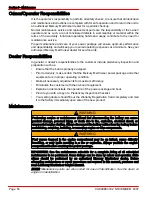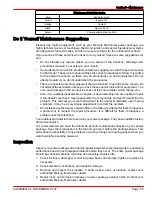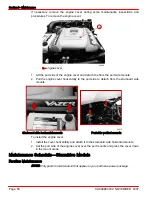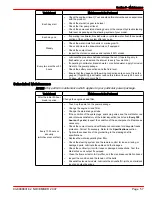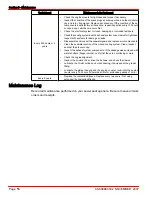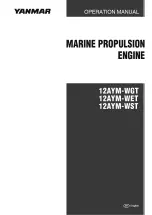
Section 3 - On The Water
90-899883182 NOVEMBER 2007
Page 43
• At extremes, can cause the boat to porpoise
Shifting weight to front (bow):
• Improves ease of planing
• Improves rough water ride
• At extremes, can cause the boat to veer back and forth (bow steer)
Bottom Of Boat
To maintain maximum speed, the boat bottom should be:
• Clean, free of barnacles and marine growth
• Free of distortion; nearly flat where it contacts the water
• Straight and smooth, fore and aft
Marine vegetation may accumulate when the boat is docked. This growth must be removed
before operation; it may clog the water inlets and cause the engine to overheat.
Cavitation
Cavitation occurs when water flow cannot follow the contour of a fast‑moving underwater
object such as a gear housing or a propeller. Cavitation increases propeller speed while
reducing boat speed. Cavitation can seriously erode the surface of the gear housing or the
propeller. Common causes of cavitation are:
• Weeds or other debris snagged on the propeller
• Bent propeller blade
• Raised burrs or sharp edges on the propeller
Ventilation
Ventilation is caused by surface air or exhaust gases that are introduced around the
propeller resulting in propeller speed‑up and a reduction in boat speed. Air bubbles strike
the propeller blade and cause erosion of the blade surface. If allowed to continue, eventual
blade failure (breakage) will occur. Excessive ventilation is usually caused by:
• Sterndrive trimmed up (out) too far.
• A missing propeller diffuser ring.
• A damaged propeller or gear housing, which allows exhaust gases to escape between
the propeller and gear housing.
• Sterndrive installed too high on transom.
Elevation and Climate
Elevation and climate changes will affect the performance of your power package. Loss of
performance can be caused by:
• Higher elevations
• Higher temperatures
• Low barometric pressures
• High humidity
For you to have optimum engine performance under changing weather conditions and high
elevation, use a propeller that allows the engine to operate at or near the top end of the
specified maximum RPM range with a normal boat load during your normal boating weather
conditions.
In most cases, recommended RPM can be achieved by changing to a lower pitch propeller.
Summary of Contents for Vazer 100
Page 8: ...Page iv 90 899883182 NOVEMBER 2007 ...
Page 26: ...Section 1 Warranty Notes Page 18 90 899883182 NOVEMBER 2007 ...
Page 40: ...Section 2 Getting to Know Your Power Package Notes Page 32 90 899883182 NOVEMBER 2007 ...
Page 54: ...Section 3 On The Water Notes Page 46 90 899883182 NOVEMBER 2007 ...
Page 60: ...Section 4 Specifications Notes Page 52 90 899883182 NOVEMBER 2007 ...
Page 114: ...Section 7 Troubleshooting Notes Page 106 90 899883182 NOVEMBER 2007 ...

